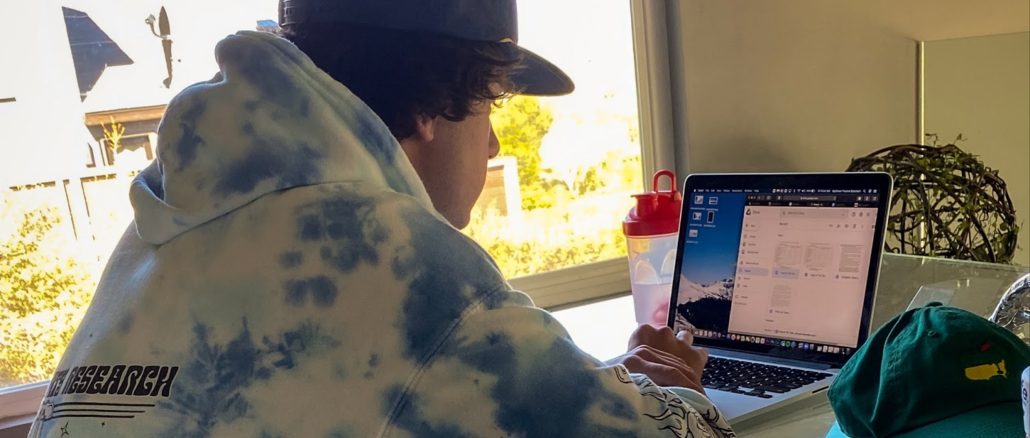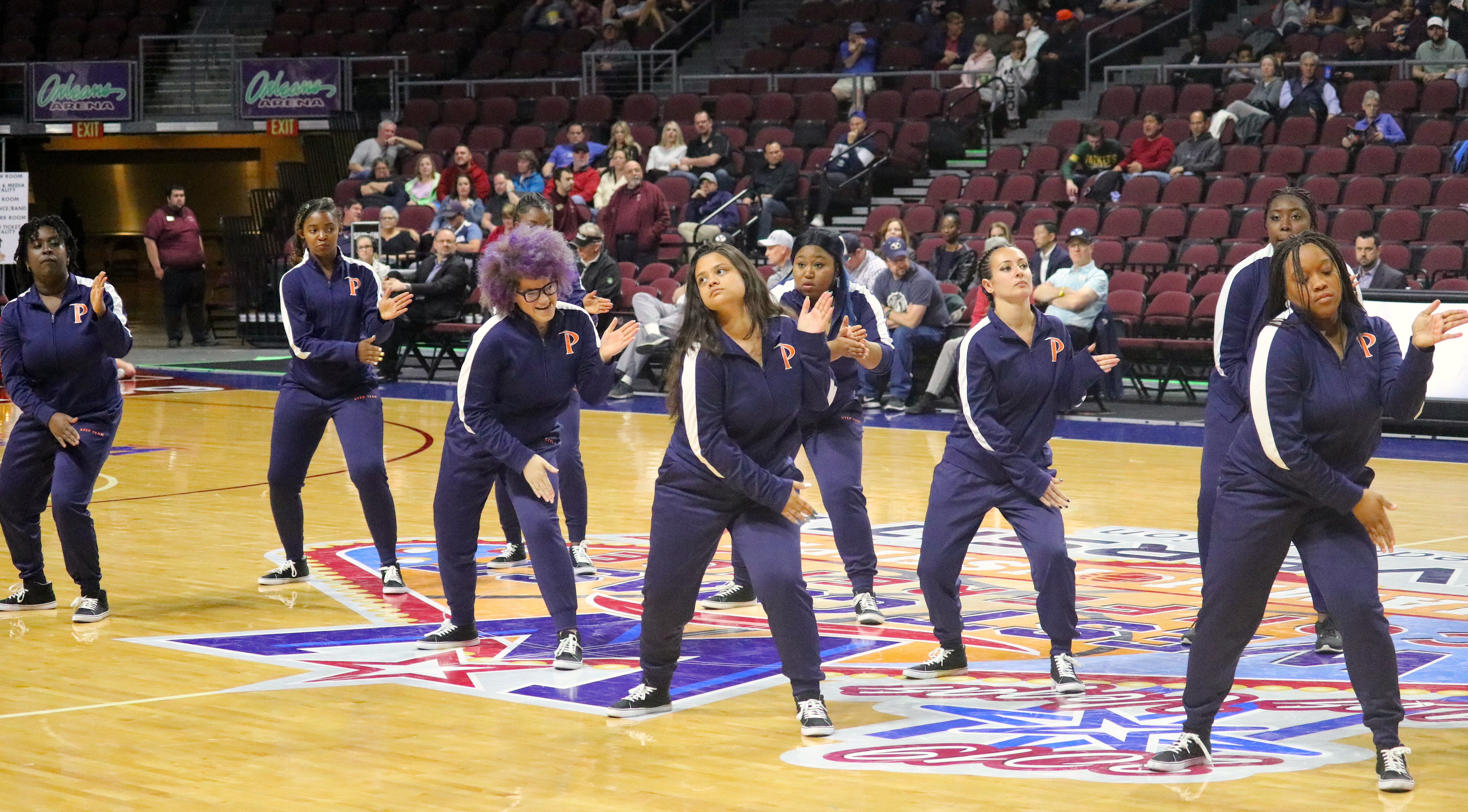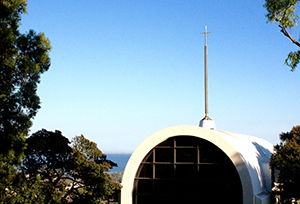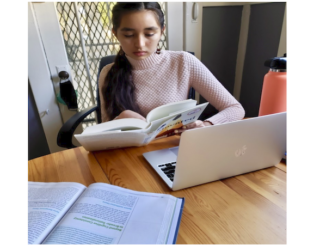
Pepperdine University would be horrible in a romantic relationship. Poor communication, big promises with under-delivery, high maintenance and very expensive to date.
Many students have recently considered breaking up.
Jake Dammen, sophomore economics and political science major, was a little over two weeks away from leaving for Washington D.C. when Pepperdine canceled the program in late July. He considered transferring but instead moved to Malibu for the spring semester.
“One of the biggest reasons I wanted to attend Pepperdine was their abroad program, specifically the D.C. program,” Dammen said. “When I found out that we were gonna be online, I was really heartbroken in a way.”
While Dammen stayed, other students have been leaving Pepperdine’s campus at an unprecedented rate. The campus experienced a 50% increase in withdrawals between Fall 2019 and Fall 2020, wrote Dana Papenhausen from the Office of Student Information and Services.
Pepperdine-student relationships have been fried with frustrations over tuition costs, lack of campus culture and poor communication of future plans. Yet some think that Pepperdine is doing all that they possibly can.
Troubling times
A Pepp Post Poll of 52 students found that nearly 35% of students had considered transferring within the past year.
The 18 students who considered transferring wrestled most with California restrictions, Pepperdine decision-making and the quality of online classes versus the tuition close behind.
The poll found that tuition price was the main source of student frustration for over 60% of students.
Since the onset of the pandemic, colleges around the country have been feeling the impact of the pandemic. Over 16 million Americans have cancelled plans to go to college, Al Thompkins wrote in a Sept. 18 Poynter article.
The entire college paradigm has taken a shift due to the pandemic. Students at high-priced universities have switched to taking courses at community colleges, and community college students are dropping out, Thompkins wrote.
Finances
Pepperdine is a relationship with a price tag of $58,000 for tuition and campus life fees alone.
When Pepperdine did not lower its tuition despite classes being delivered online, many students were outraged.
“Societally, there was a movement that said why should people pay the same for online as in person,” said Andrea Harris, senior director of Student Administrative Services. “And that was the backlash that we got.”
Unhappy with the price of tuition now, Dammen looked into his options. He was prepared to take some courses at a local college; that way, he could learn in person and save some money. He realized that the same courses he would take at Pepperdine would cost a quarter of the price at his local state college.
“It made me feel like they were more worried about how much money they were losing … opposed to what they were doing to make kids have as much of a normal educational experience as they could” Dammen said. “[That] made me kinda feel like they weren’t behind me and my educational goals.”
However, instead of giving up on Pepperdine, he decided to get back to the Malibu area and community he knew he loved.
Sophomore biology major Colby Turner also had issues with the way money was affecting his schooling. Turner elected to live at home in Texas this semester and was angry when campus decided to open.
“I have even become more frustrated the more that [Pepperdine has] opened up,” Turner said. “Because opening up classes at 25% — now you are basically only catering to the people who can afford to live close to Malibu.”
Turner believes that the opening of the campus and selectivity with on-campus housing — athletes and those that received hardship exemptions — has made Pepperdine more exclusive.
Culture
The campus opening has allowed local students the opportunity to visit the campus and add some new life to their academic career.
Morgan Clinton, senior psychology major and Student Wellness Advisory Board co-president, said the campus closure was like losing part of the Pepperdine culture.
“Maybe people will feel the revitalization that we have been looking for all year,” Clinton said. “Pepperdine has given us something to look forward to now with getting back on campus and getting together with peers again.”
Many students chose Pepperdine for it’s close-knit, small campus community.
“The on-campus experience and interaction with faculty and staff was a major decision in my initial attendance to Pepperdine,” Dammen said. “When that was taken away, there was no difference between me attending Pepperdine or me attending a state school or community college.”
Campus reopening is key to the revitalization of the student population and the Pepperdine student culture.
Next as important is International Programs, an experience that a majority of sophomores partake in.
Noah DeVries, a sophomore at Texas Christian University, transferred from Pepperdine after hearing about the Fall 2020 decision. Like Dammen, DeVries was looking forward to going abroad.
“I was going to be in Argentina, so I was going to love that,” DeVries said. “Losing that opportunity was a huge factor.”
Turner was supposed to go to Florence this year and said he thought he was lead on all summer.
“I lost faith a little bit, in Pepperdine, because all throughout the summer we were being told that everything was being done for abroad and had the perception abroad was going to happen,” Turner said. “We were under the interpretation that if abroad didn’t happen, at least you were on campus.”
Communication
Colleges across the country have shut down, each school making the decision on a case-by-case basis. More than 1,300 schools in all 50 states cancelled in-person classes, Andrew Smalley wrote in a March 22 National Conference of State Legislatures article.
California was hit harder than other states, forcing nearly all schools to remain closed when there was a spike in cases, halting any openings that had begun to move forward and effectively lengthening the time out of classrooms, Howard Blum and Laura Newberry wrote in a Nov. 17 LA Times article.
All interviewed students cited communication issues as a major cause of their frustration, and it was one reason DeVries cited as to why he did not come back.
“COVID definitely was a huge factor,” DeVries said. “In terms of the administration and the communication with the students, I think it was pretty lackluster to say the least.”
Until just a couple weeks prior to move in, the University led students to believe that classes would be in person.
Many students felt a sense of misdirection.
“It seemed like every time they were trying to be hopeful, but their enthusiasticness of actually being on campus seemed more like they were just blatantly lying to us and leading us on to keep people from transferring or deferring in the fall,” Turner said. “Had they been honest and upfront about what the outcome would have been, I can say like 95%, I probably would have transferred last fall.”
The poll found that over 76% thought, accurately, that Pepperdine was at the mercy of the state guidelines. But nearly a quarter believed Pepperdine chose to hold classes remotely.
Joe Sadler, a freshman studying creative writing and philosophy, was at home for the fall and made his way to the Malibu area during the spring semester. Sadler said if he had been better informed, his year would have gone another direction.
“I do wish I would have found out earlier,” Sadler said. “I feel like it would have probably done things differently if I found out earlier, like maybe taking a gap year.”
Eventual understanding
The poll found that the majority of students thought that Pepperdine did an average job of handling its COVID response.
Poll respondents left some notes as to where administrators could have improved, including lowering tuition, increasing transparency and showing more care toward the students. One respondent mentioned the last-minute nature of the decision left them locked into a lease.
SWAB is in a unique position, as it works with both students and faculty, meaning it has a better idea of what is going on around campus.
“As a member of SWAB, knowing everything they’ve had to go through and all the hoops they had to jump through, I know they did the best job they could have given the circumstances,” Clinton said.
Some thought the blame was misguided toward Pepperdine
“To blame a university for what a government has said is a waste of everybody’s energy,” Harris said. “I think it became a political issue as opposed to a health issue.”
The students that left were not worried about their health, Harris said. It was greater than that. It was an issue of politics, socialization and delivery methods.
“The difficulty, at least from my perspective, was that depending on which state you live in, you could be in school in person,” Harris said. “If your goal was to socialize — and I understand it — why wouldn’t you go to that school if you could?”
Administrators understood they could not open like some other schools, but continued to prioritize their students’ happiness. They processed withdrawals without attempting to convince students to stay, Harris said.
“We don’t combat it, ever,” Harris said. “Our goal is to respect our students and help them make the decision that works for them and their life.”
Some students thought that the University was put in a challenging position, and they had to do what was best for them and their students.
“You can’t put the whole blame on them,” DeVries said.
Most students said Pepperdine did the best it could. It was not perfect, but students are not forced to stay. After all, not every romantic relationship ends in marriage.
Patrick Harley completed the reporting for this story under the supervision of Dr. Christina Littlefield and Dr. Theresa de los Santos in Jour 241 in Spring 2021. Dr. Littlefield supervised the web story.



